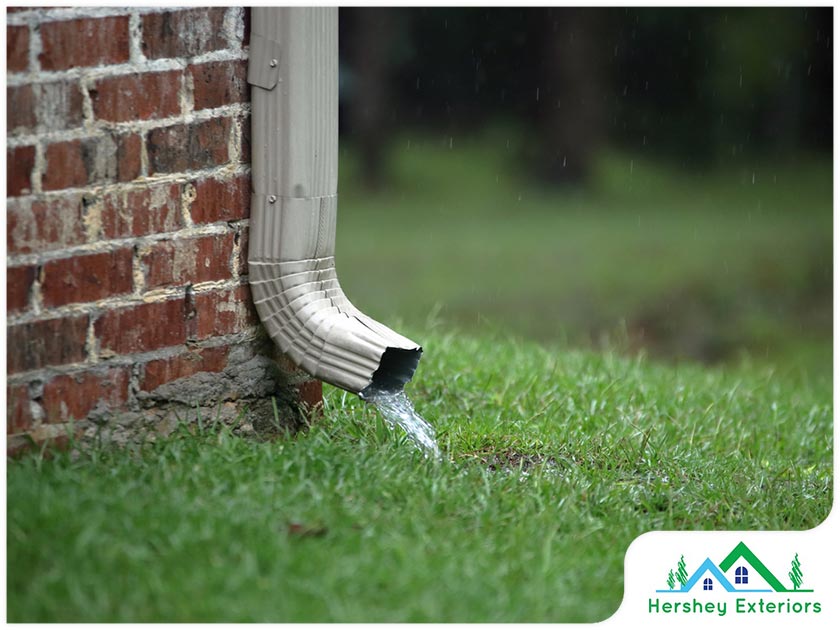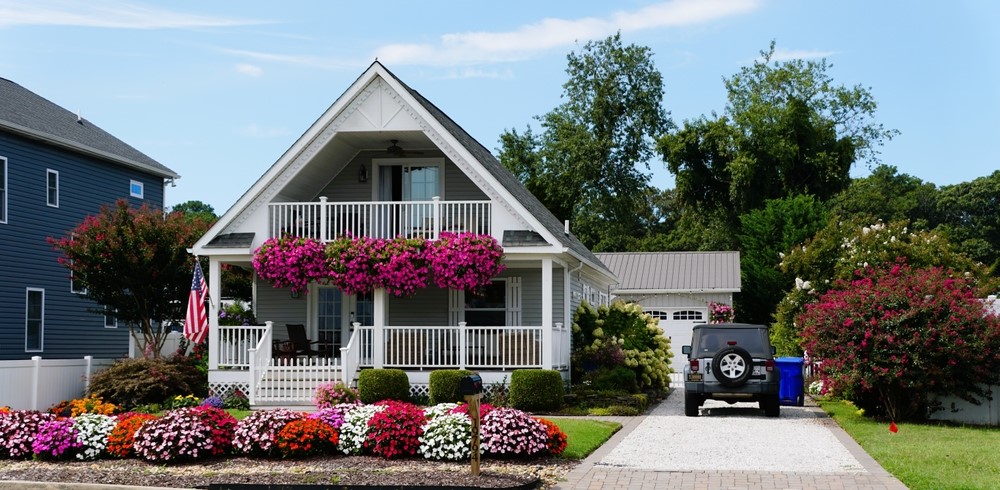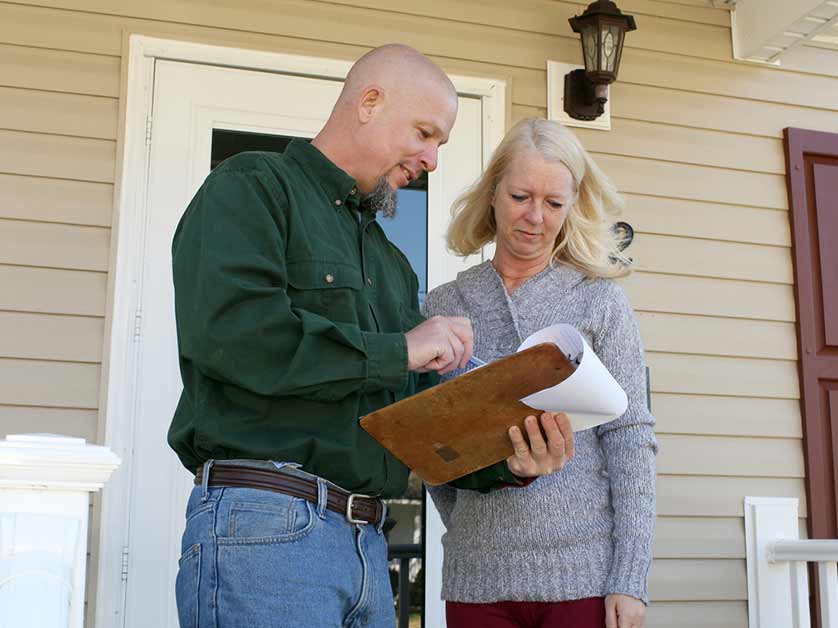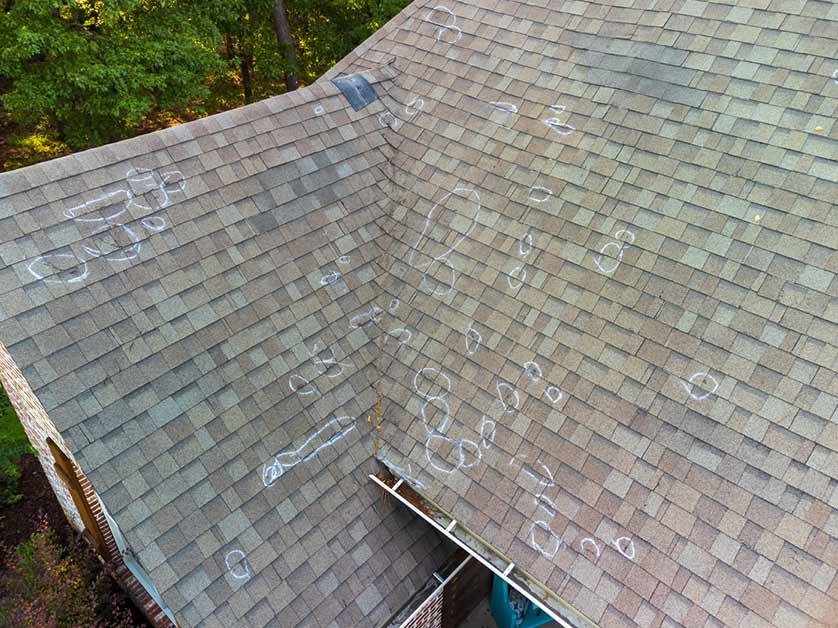Rain gutters have been used for centuries. They play a huge role in protecting residential and commercial roofing from water damage. Without gutters, rainwater and melted snow will end up directly beneath the eaves, damaging shrubbery, seeping into the soil, flooding the basement and causing moisture damage to paint, siding, insulation and many other parts of your home.

However, a gutter system isn’t all about the gutters. To be effective, it relies on downspouts, the fat pipes where gutters lead water, and which then drive water away from your home and into the drain or onto the yard. Gutters alone are less effective if all they do is lead water to a hole, from where it drops directly to the ground. Downspouts complete the process that prevents rainwater from causing damage.
The Importance of Downspout Placement
1. Leading Water Away From Your Home
Downspouts determine where the water from the gutters will discharge to keep residential and commercial roofing and the buildings they protect from water damage. If your downspouts are poorly placed, that water can cause plenty of issues. It can destroy your landscaping, flood your basement and slowly erode your home’s foundation each time the rain falls.
To prevent water from wreaking havoc, your downspouts should be placed in such a way that they take water where it cannot cause any problems. Your downspouts cannot be too short, either, so it’s a good idea to buy downspout extensions long enough to lead water into a drain or onto the yard. Think about installing splash blocks as well to keep excess water from splashing about instead of entering the downspout.
2. Making Sure the Downspout Can Handle the Load
A gutter system works with gravity, so the main thing to consider is whether the gutters are properly pitched so the water doesn’t end up affecting your siding, walls, basement, foundation and other parts of your property. It’s simpler to do that with a straight and simple roof design.
However, if your home is more complicated in terms of the roofline, it might be more confusing and labor-intensive to install a proper gutter system. You definitely need a professional to do it. A home with multiple peaks and valleys is a bigger challenge than a straight roofline, but a professional gutter contractor can make sure your gutters and downspouts are installed correctly. They can also see to it that the downspouts can handle the load of water coming from the gutters at any given time.
High-volume water runoffs can overwhelm your gutters if the downspouts are not positioned correctly or if they are too small for the drainage demand. This can lead to rainwater overflowing and soaking into the fascia, soffit, siding, etc. Pooling water also causes additional strain on the gutters, which can lead to cracked, leaking gutters or gutters that pull away from the roofline. Not only can this cause more damage, but it can also present a risk to your family and your pets as well as to your car and other belongings.
3. Adding Conductor Heads
While most people know what gutters and downspouts are, few people know that there are other accessories that can be installed to a gutter system to make it more effective.
A conductor head is a funnel at the top of a downspout. It is also called a rain leader or a gutter leader. The conductor head’s job is to control the flow of water coming from the gutters, particularly if several gutters intersect at a point in the system. Without a conductor head, the volume of water entering the downspout might be too much, and this can lead to overflowing as the small entry point of the downspout is overwhelmed and becomes a bottleneck. Placing a conductor head where it is needed the most is a good idea for controlling the flow of water into the downspout or downspouts.
However, conductor heads are typically made of copper and are most commonly installed with a copper gutter system.
4. Improving the Look of Your Home
Downspout placement and the addition of accessories also play a role in improving your home’s curb appeal. If downspouts or accessories are not properly installed in the best places, your home’s appearance can be affected. Not only will this bother you, but it can also affect the value of your home.
Hiring a professional to determine where downspouts should be installed can help you stay away from simply installing them and regretting the unsightly appearance down the road.
General Guidelines for Downspout Placement
It’s a good idea to find out as much as you can about where downspouts should be placed, even if you’re hiring a professional to do the job. Here are some general guidelines.
- Install at least 1 downspout for every 40 linear feet of gutter. This distance is adequate for most homes as it can allow water to drain into a downspout even during heavy downpours without overflowing. Proper downspout placement can go a long way in preventing the need for additional storm damage repair.
- Never position a downspout so it discharges close to your home or to its foundation. In some cases, landscape or hardscape features can block the natural flow of water and force it to pool next to your house. Ground seepage can lead to a flooded basement or an eroded foundation.
- Install downspout extensions if downspouts cannot be installed where they lead water away from the house. You can also install extensions to lead water around landscaping features and into a drain or an area where water cannot cause damage.
- If possible, and if it’s legal, install a downspout so it connects to an underground pipe that leads water into the city storm sewer.
- Use conductor heads, scupper boxes and Y-connectors when and wherever necessary. Scupper boxes are typically used when downspouts have to go through a wall. Y-connectors allow the connection of gutters to two downspouts at the same time.
Additional Knowledge: Protecting Your Gutters and Downspouts From Debris
If your home is located near a forest or if it’s at least surrounded by tall trees, you’re probably not new to gutter and downspout clogging. Even if your gutters are correctly pitched and your downspouts are properly positioned, overflowing might still be a problem because of the leaves, twigs, birds’ nests and other debris that finds its way into your gutters and downspouts. In the winter, a clogged gutter or downspout is likely to freeze. The freeze-thaw cycle is one of the most destructive phenomena that can affect your gutters and downspouts.
Cleaning your gutters and downspouts at least once a year helps prevent clogging problems. However, you might have to clean them two or three times more every year if there are tall trees dropping dead leaves and branches or pine needles into your gutter system all the time.
To lengthen the gap between cleanings and still prevent clogging, invest in an effective gutter protection system or gutter covers. These allow water to flow freely into the gutters and downspouts, but they keep debris out. The debris that falls on your roof will harmlessly fall to the ground when the wind blows or when the rain falls.
To find out more about the importance of downspout placement, get in touch with Hershey Exteriors, Inc. We offer various home improvement services as well as storm damage repair. Call us at (302) 569-9039, or contact us here now.
Tags
Subscribe to Hershey Exteriors's Blog








Comments